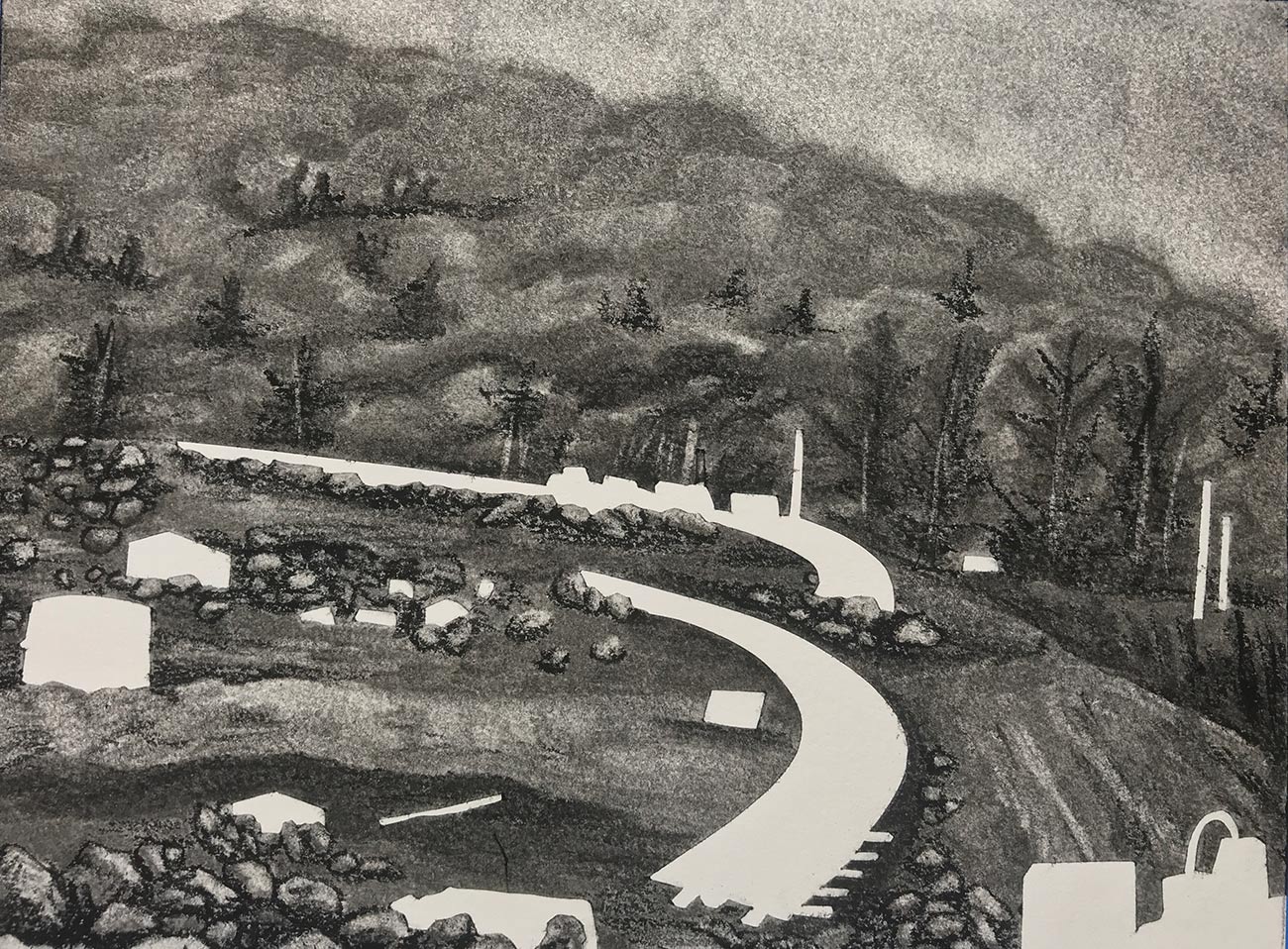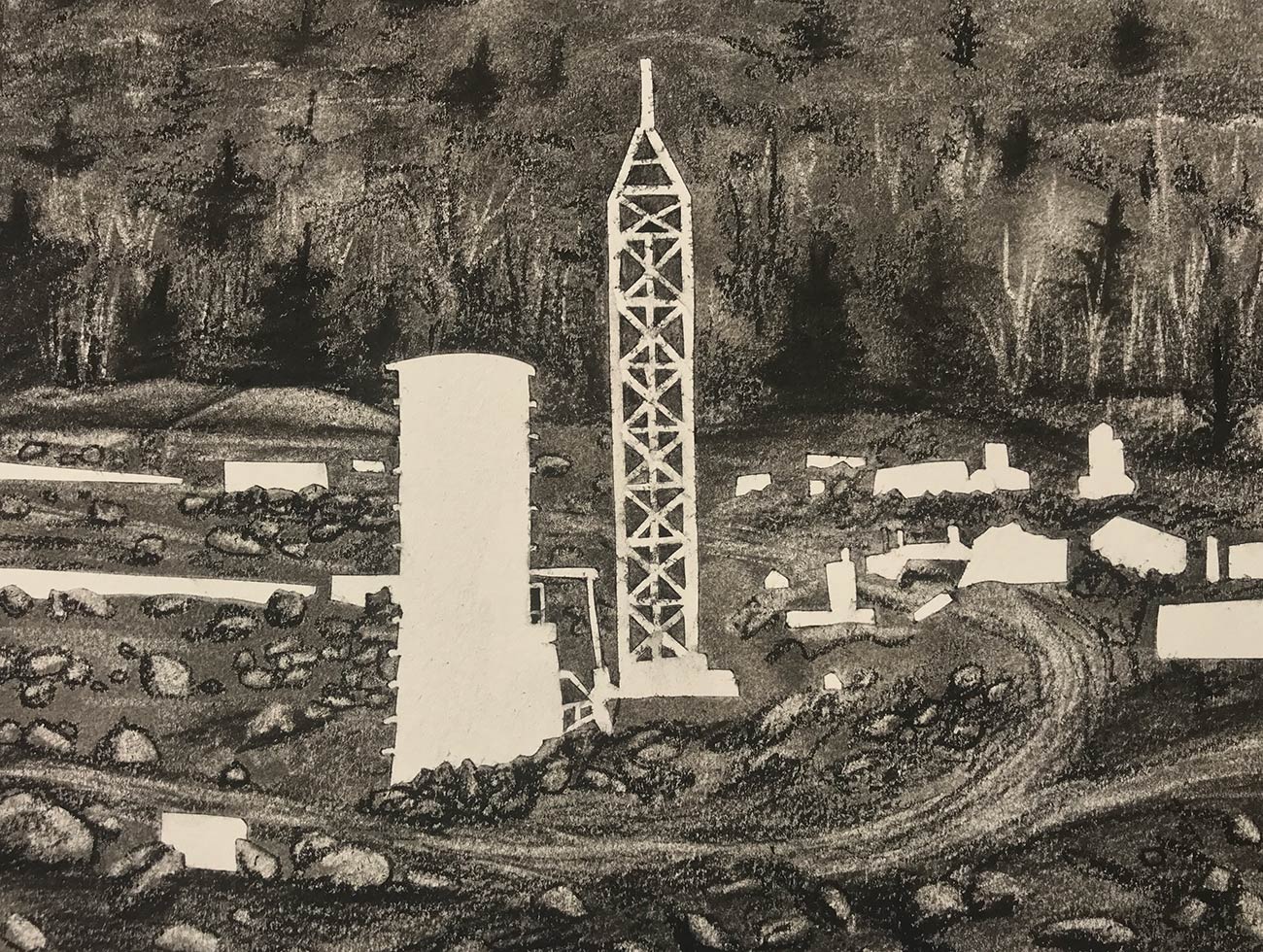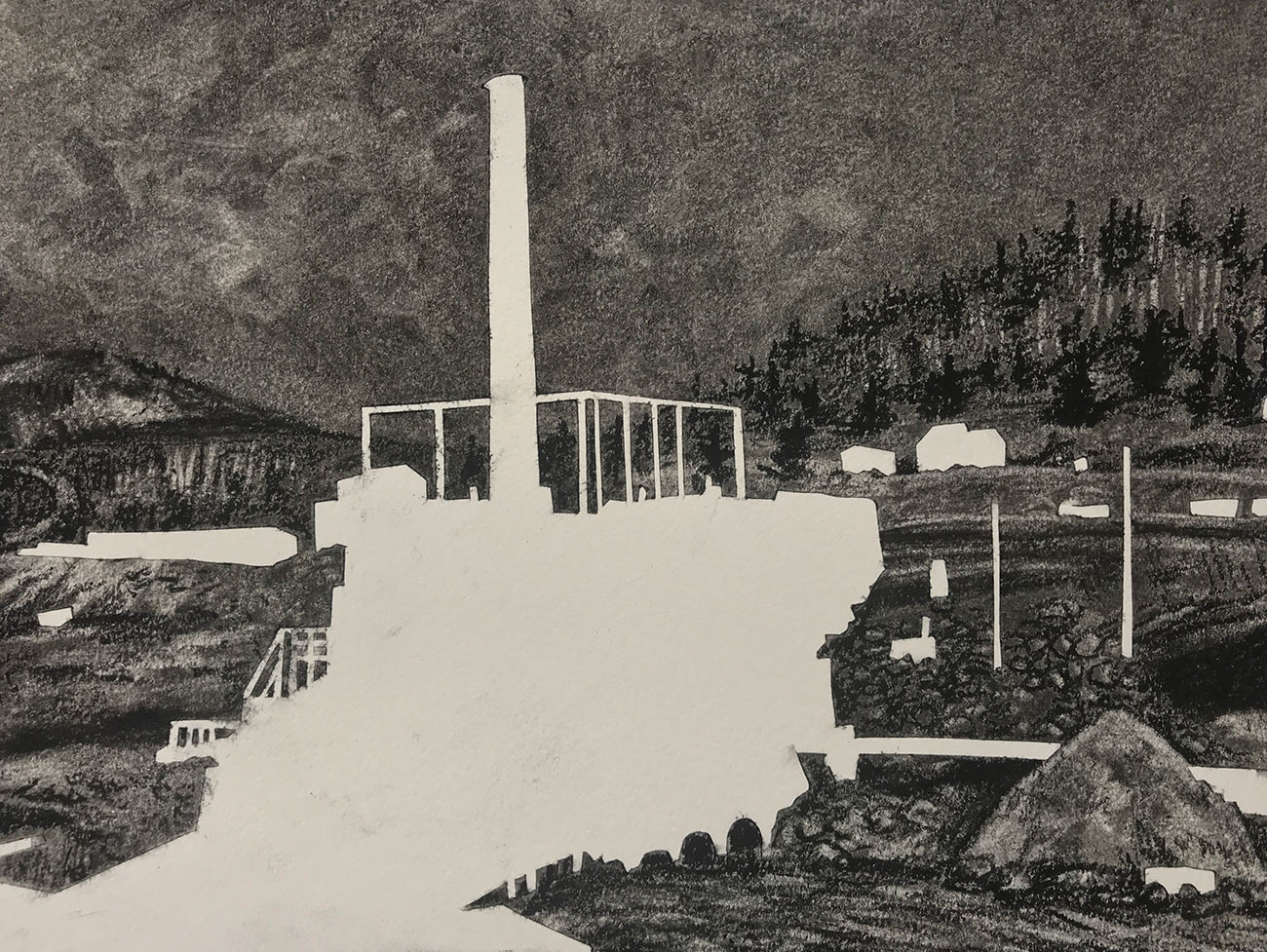In this two-part feature on the Environment, artist Nina Elder, graphic designer Elizabeth Kaney, and report editor Kerri Arsenault examine the consequences of resource extraction in the River Valley.
In part I, Nina Elder presents her graphic series Present Ghosts: River Valley. The series reinterprets archival photographs of the community’s early development in order to draw attention to the construction, extraction, and abandonment that characterizes much of the region’s history. Through a series of drawings made with industrial pulp mill waste, she challenges us to look past capitalist development—from paper mills to reservoirs—by removing them altogether, allowing one to focus entirely on the environment. Her work provokes the question: What might it mean for the community to look beyond its industrial fabric? —Maine’s River Valley report editors
Read part II of the Environment feature here.
Artist Statement
The drawings are based on archival photographs of the River Valley’s early development. Although historical cycles of construction, extraction, abandonment, and decay have defined the River Valley landscape, these legacies are often camouflaged or concealed. My process included stenciling and erasing as a way to reflect on the disruptions and environmental erasures that have happened in this area.
I used industrial pulp mill waste for these drawings. The pulp mill waste is a raw carbon powder that is a byproduct of industrial paper factories. Many of the mills and factories incinerate their waste and pulverize it into fine enough powder that it is not regulated by any environmental standards. Although it is remarkably black and messy, it is incredibly light. The powder is dispersed in piles that are meant to be carried away by the wind or wash away with rain.
Each drawing is 8″ x 10″.
Materials: Industrial pulp mill waste on incised paper.
Biographies
is an artist and researcher who creates projects that reveal humanity’s dependence on and interruption of the natural world. With a focus on changing cultures and ecologies, Elder advocates for collaboration, fostering relationships between institutions, artists, scientists, and communities. Her work takes many forms, including drawings, performative lectures, community projects, and public art.
The views expressed here are those of the authors only and do not reflect the position of The Architectural League of New York.




